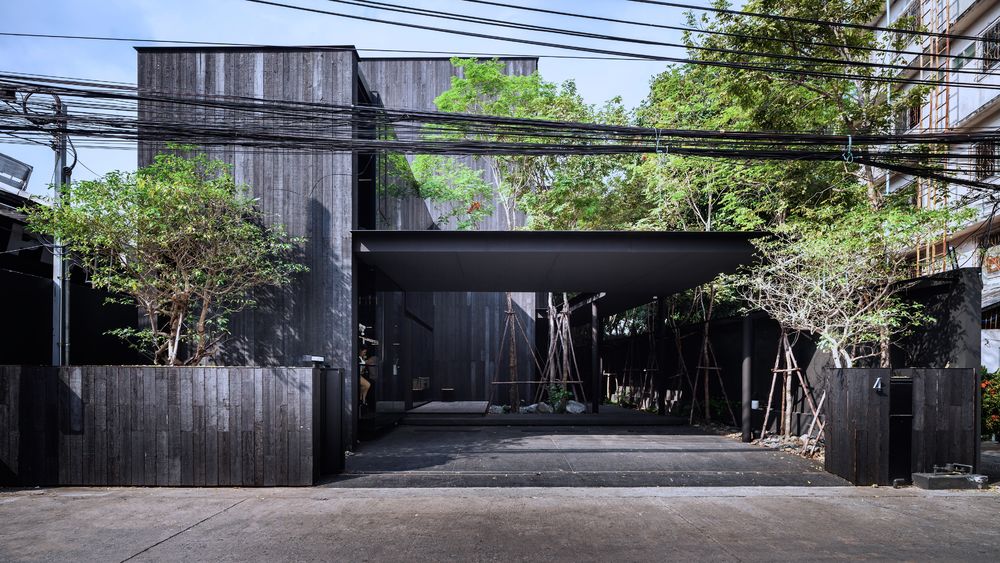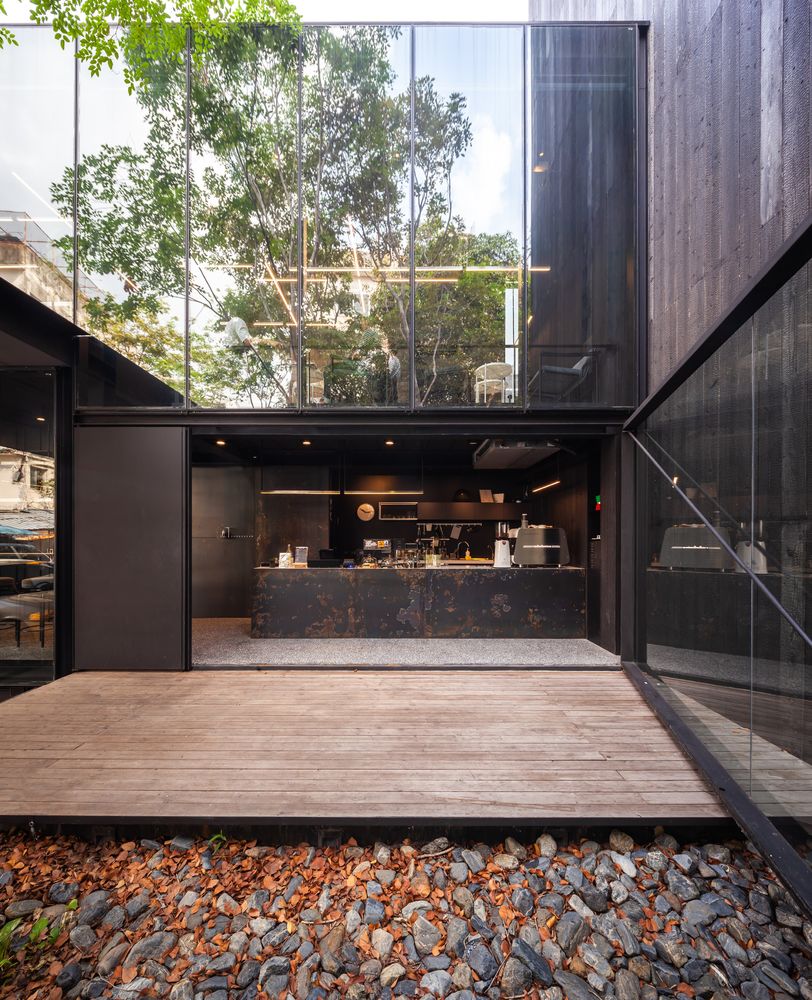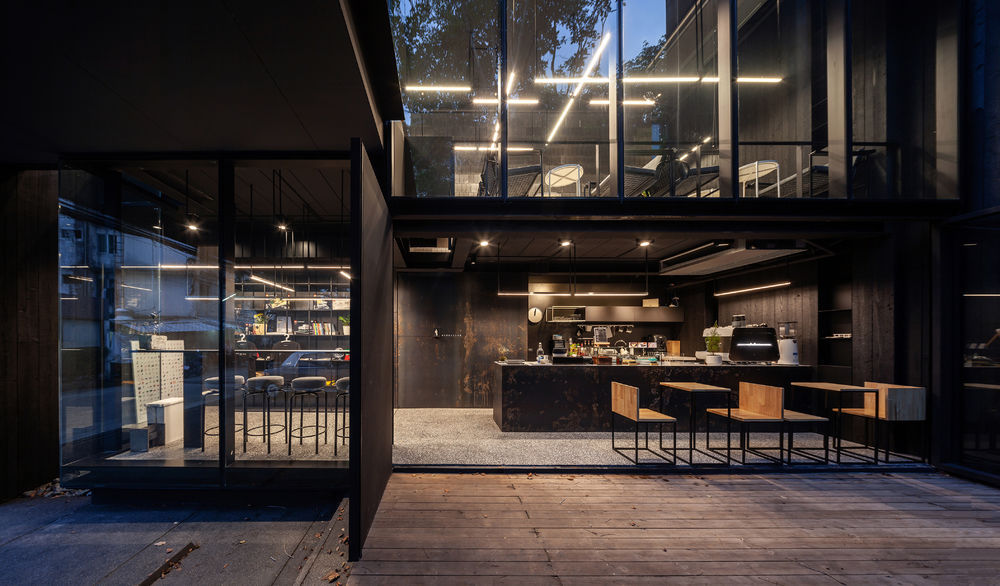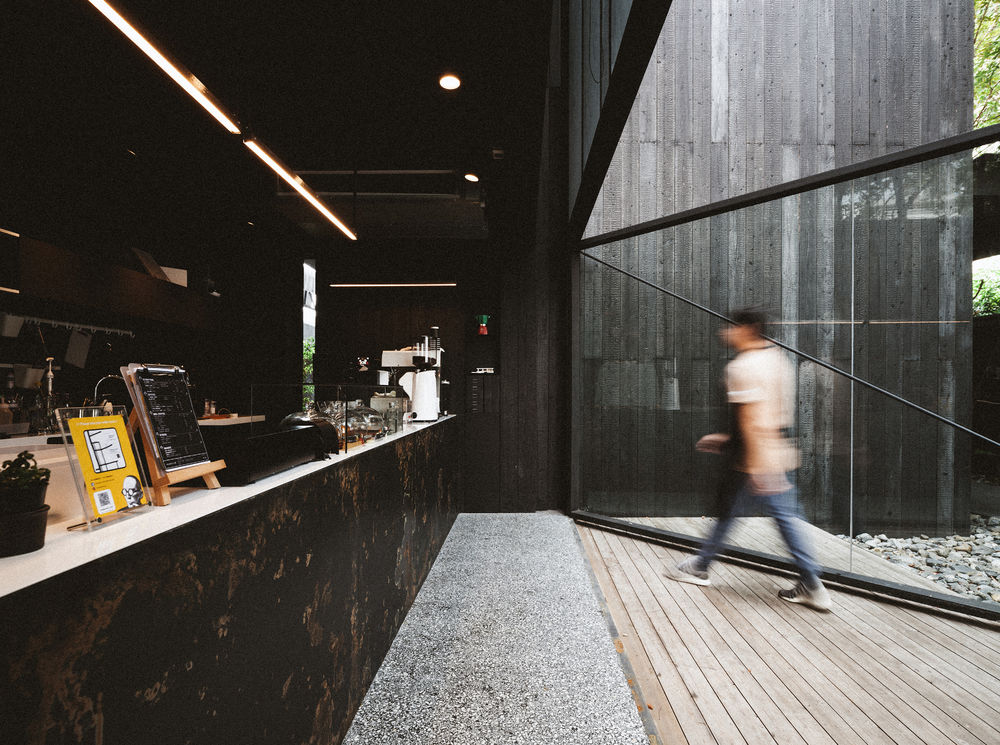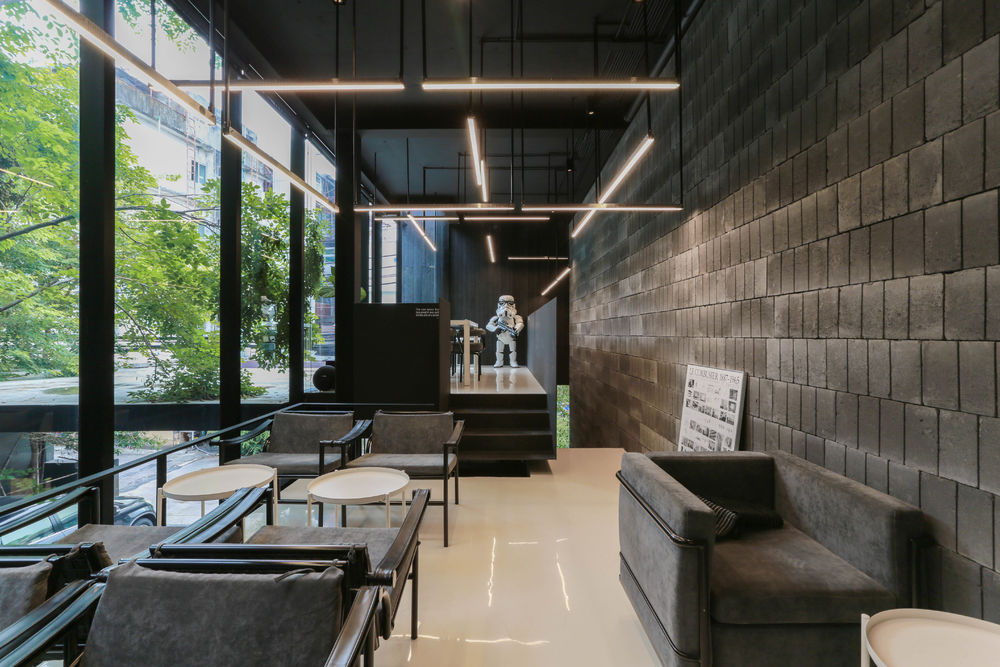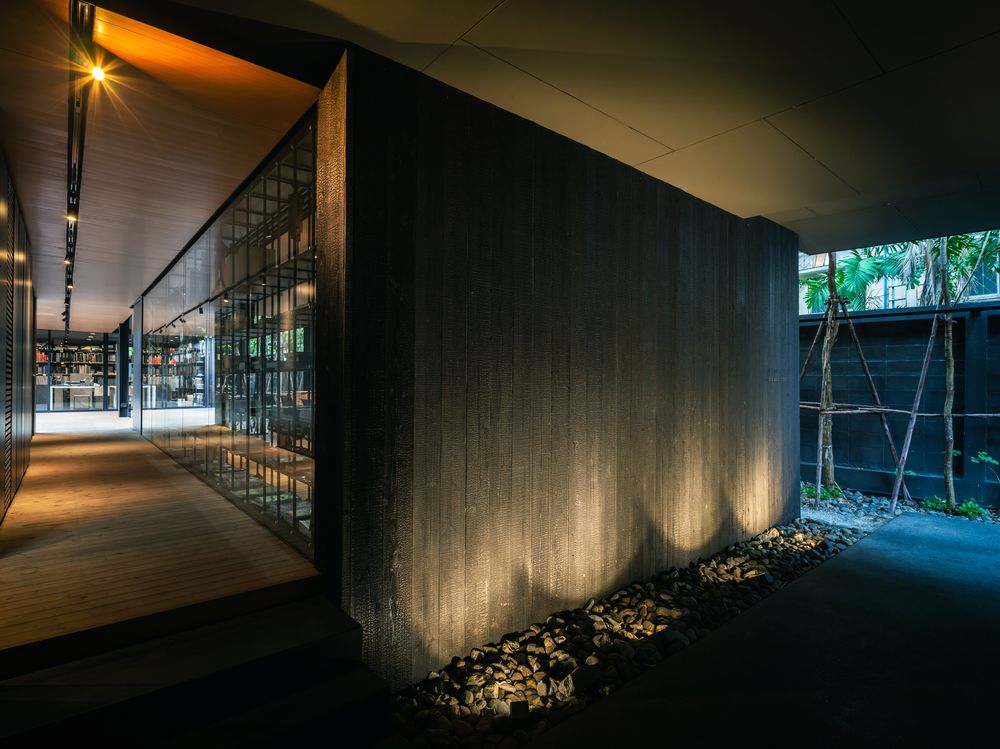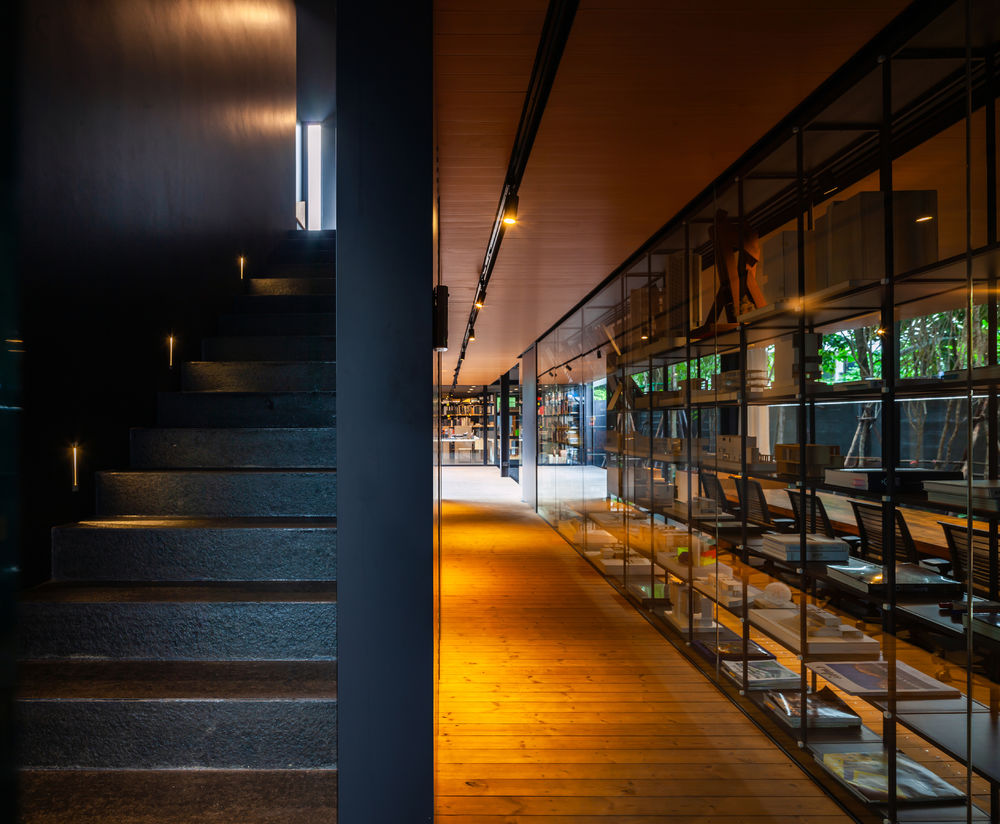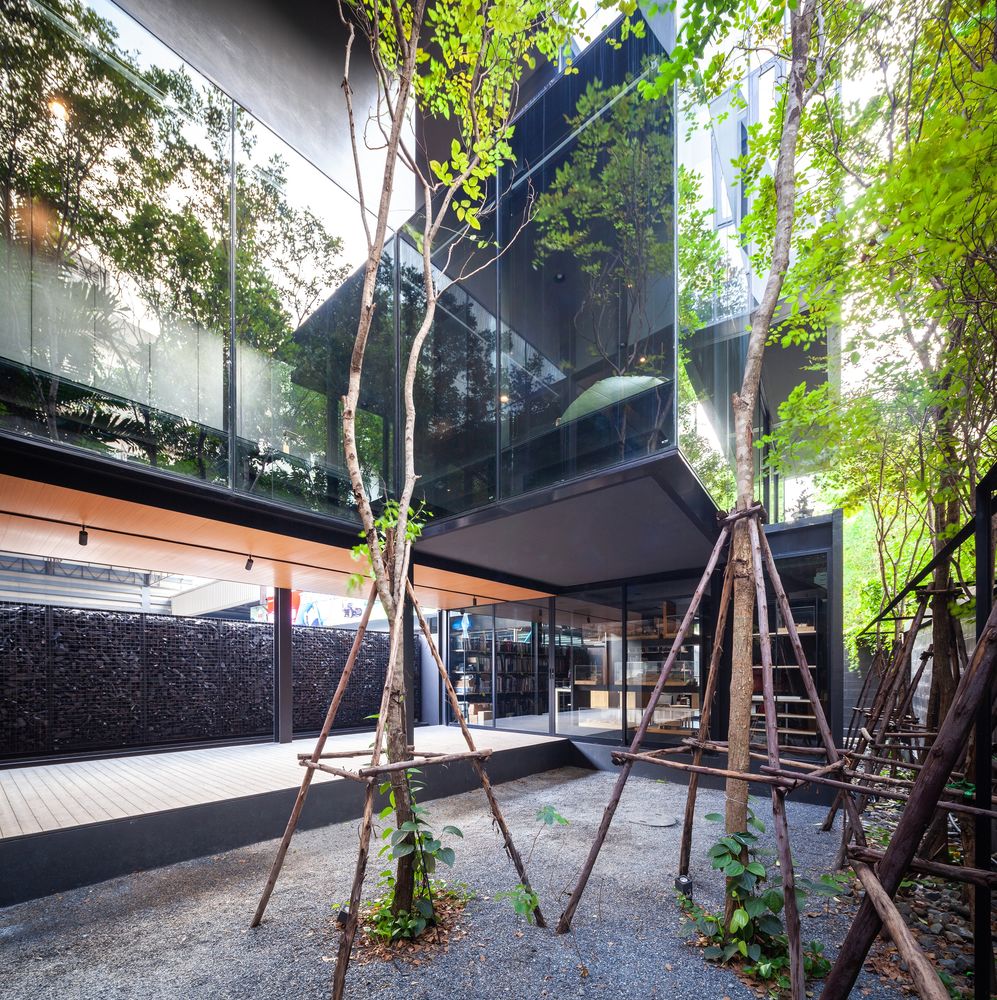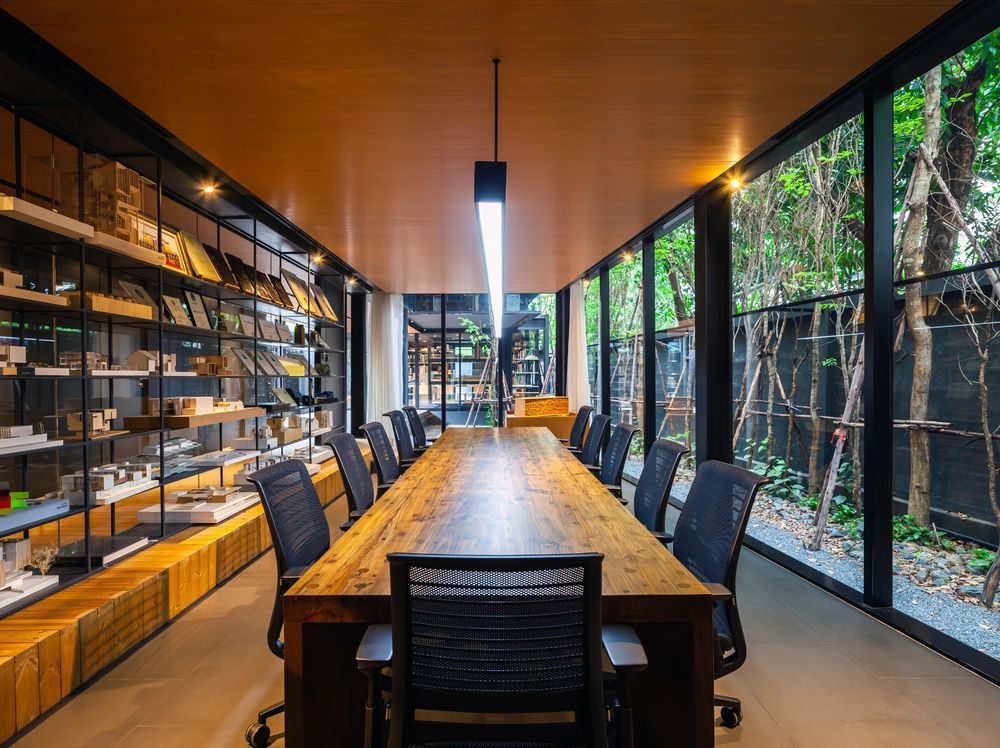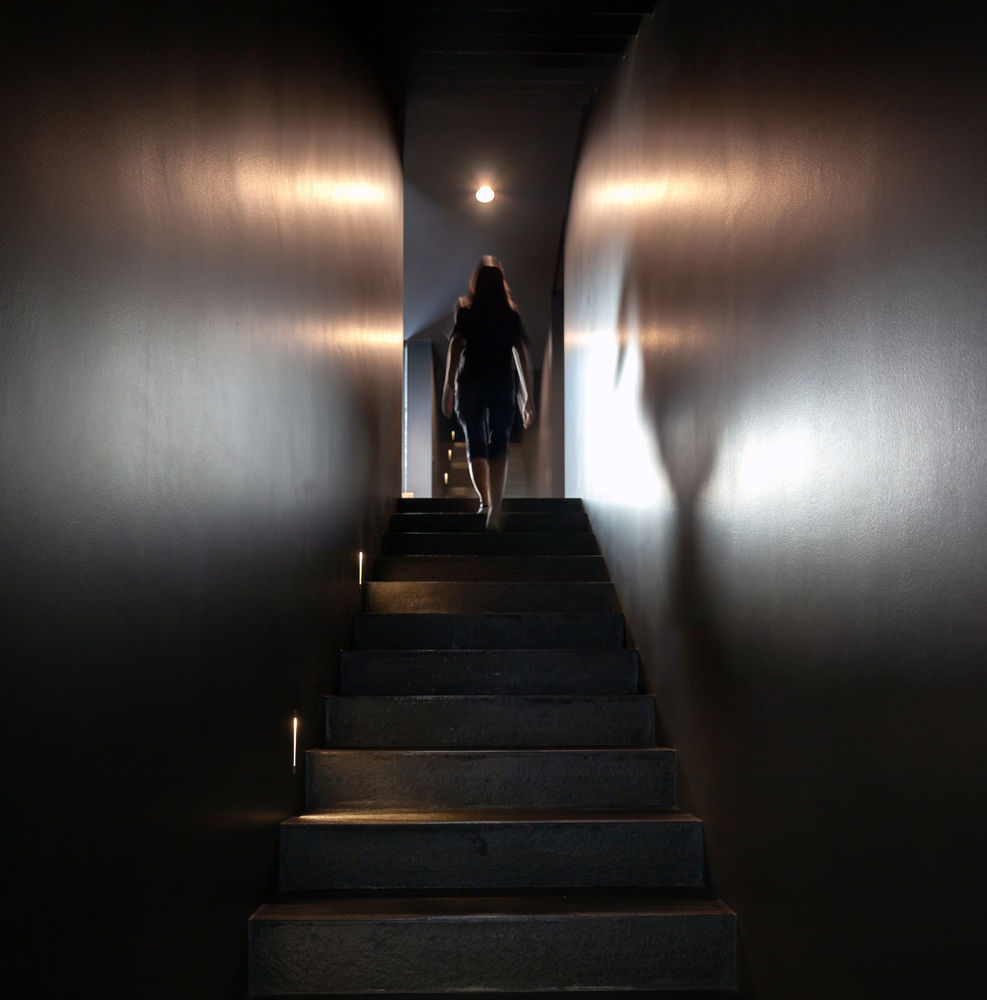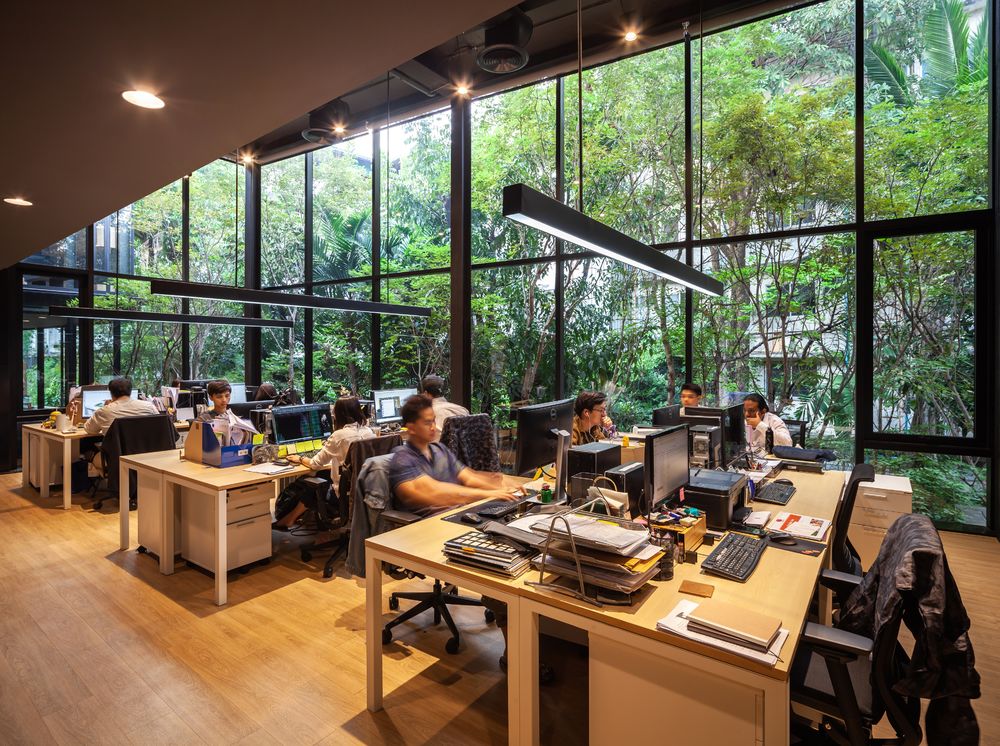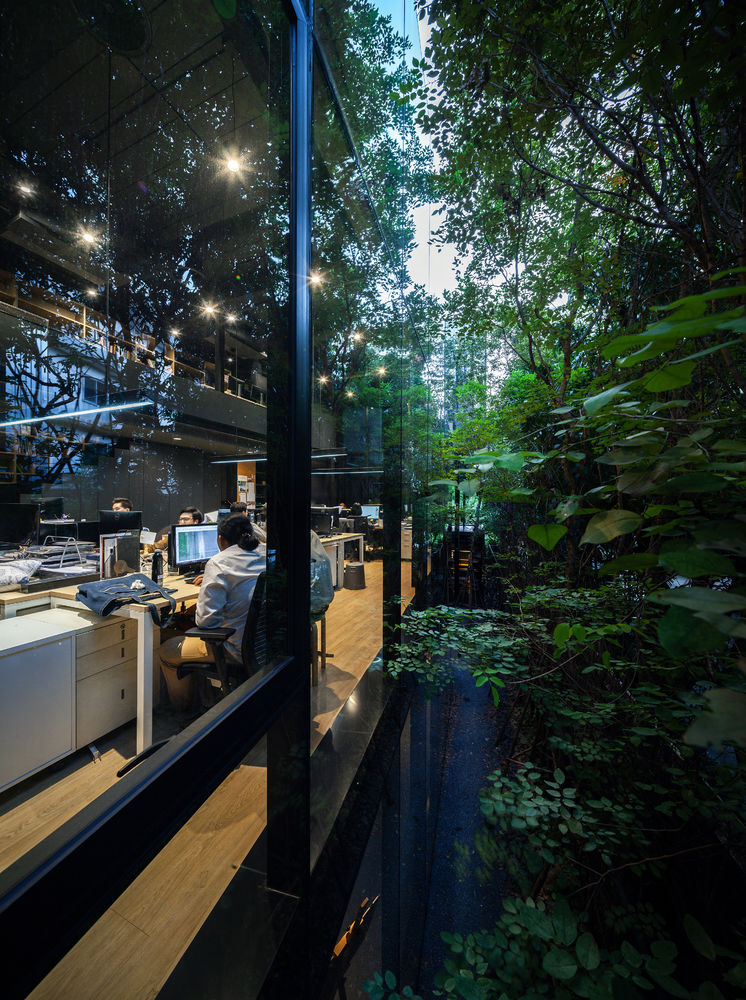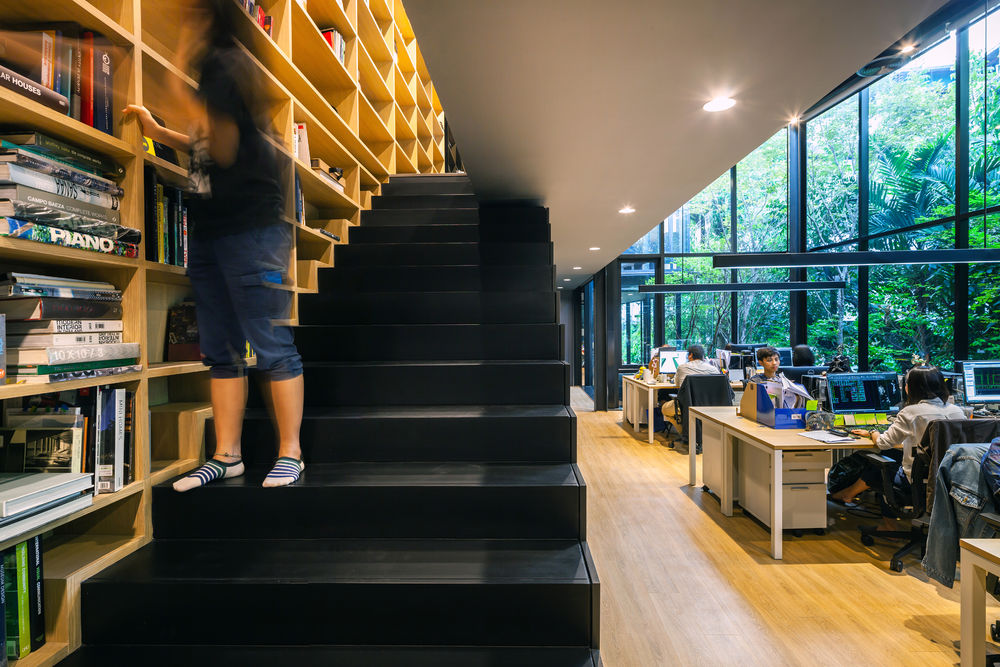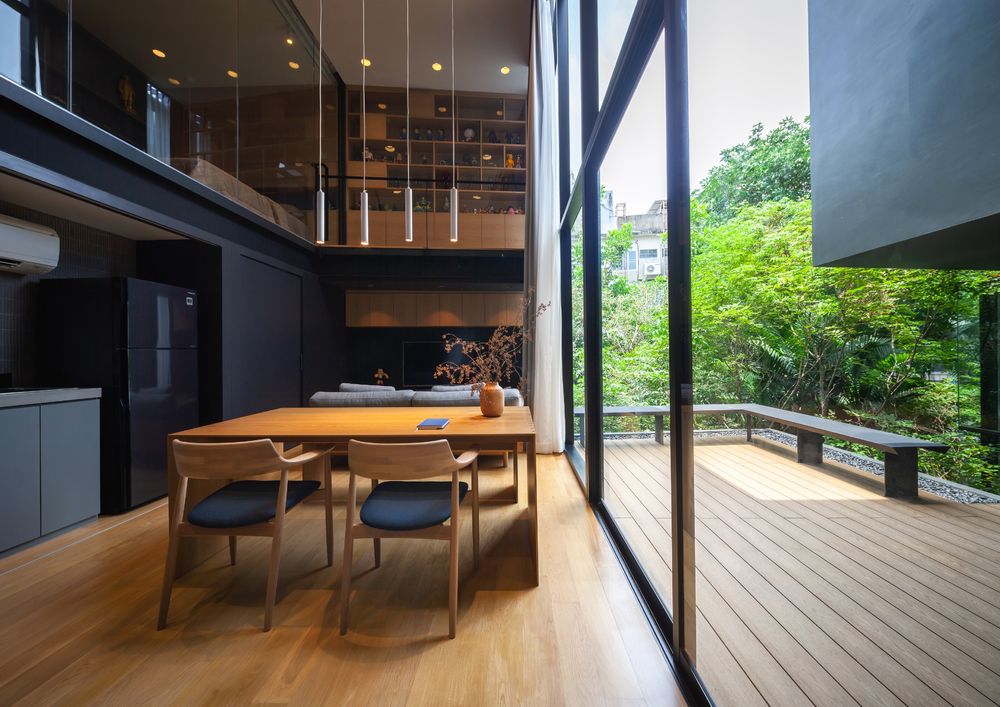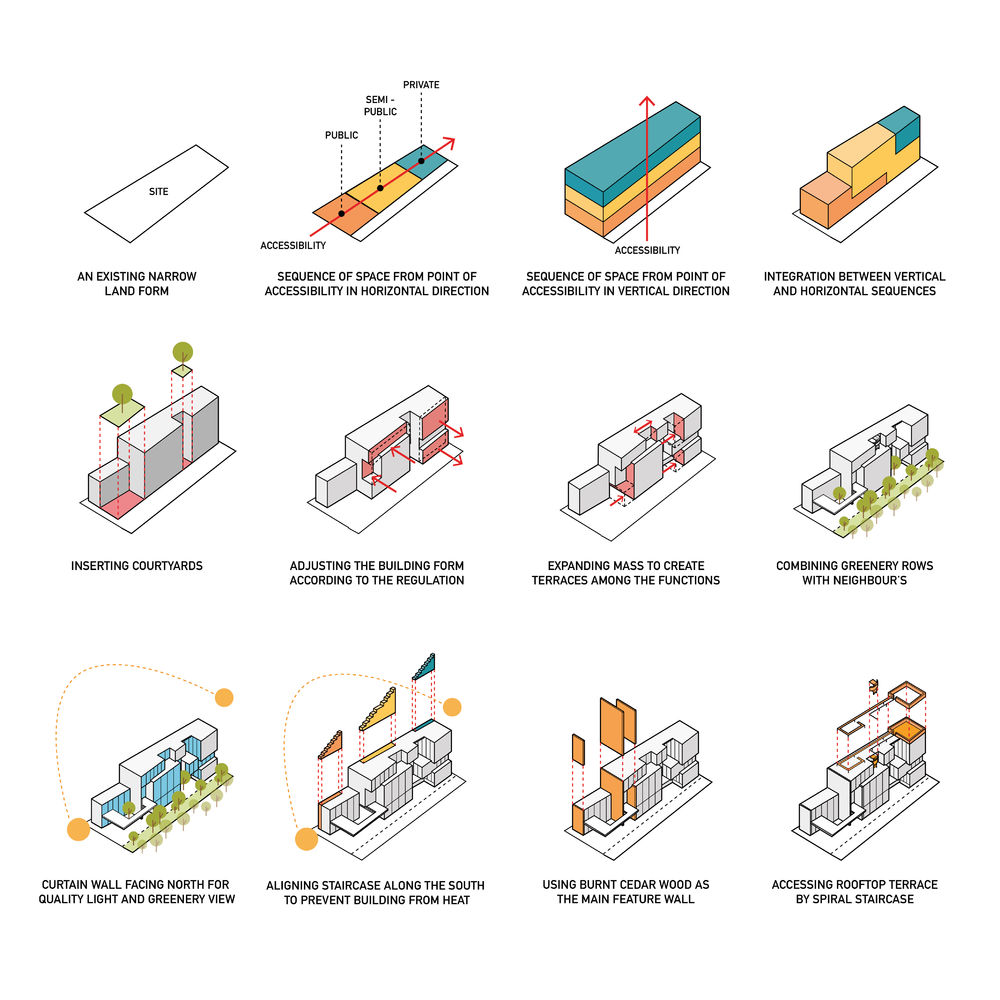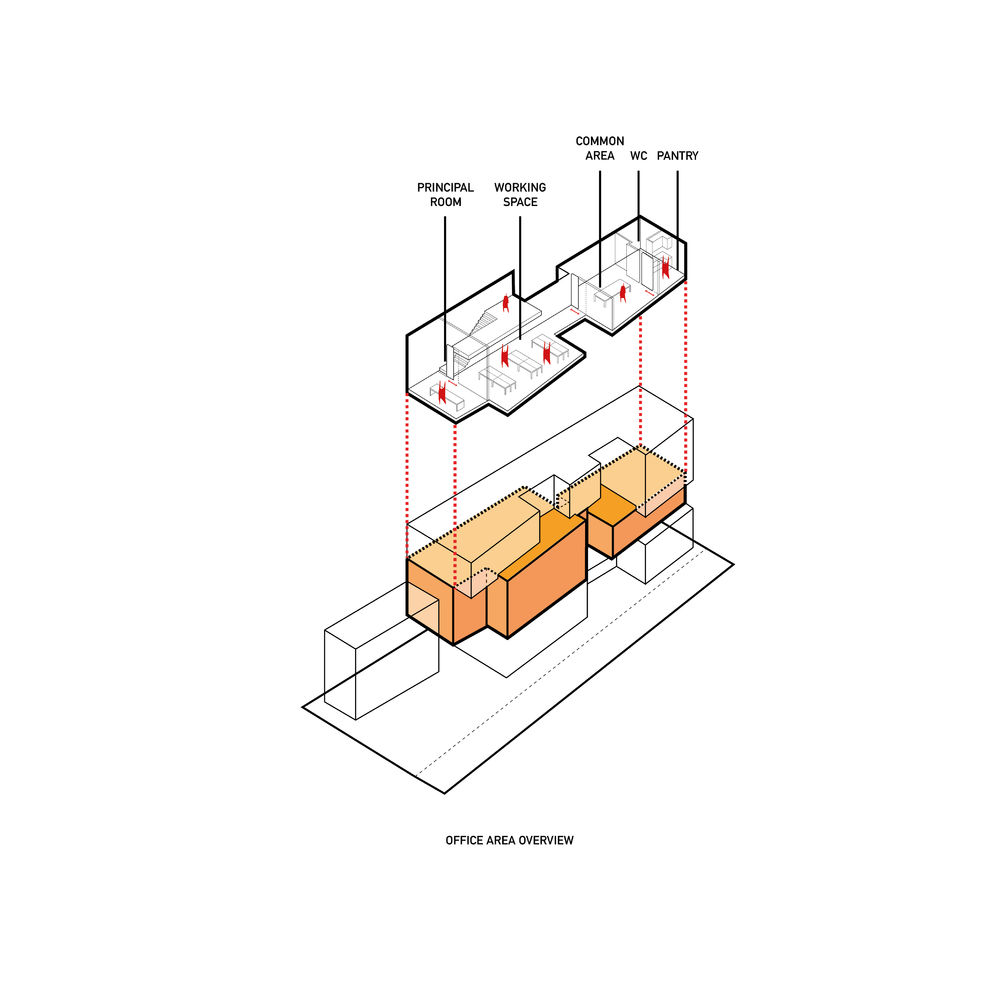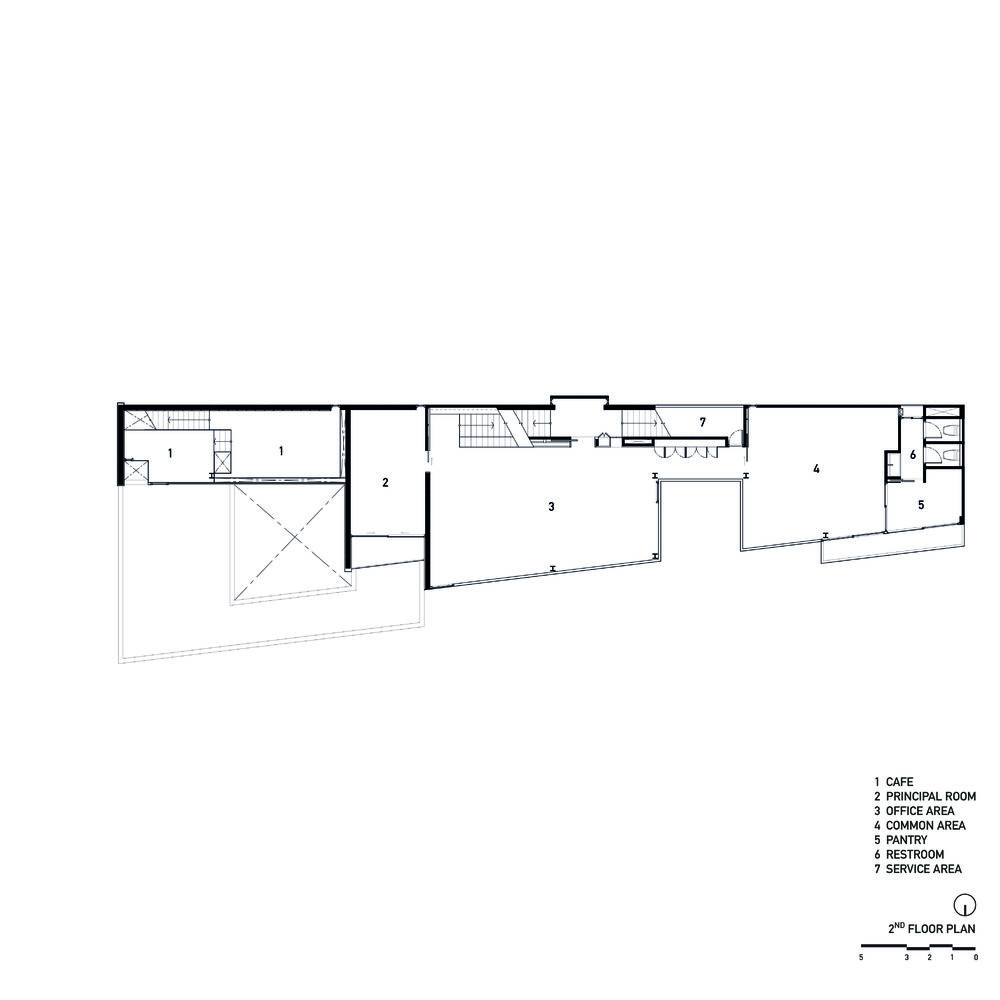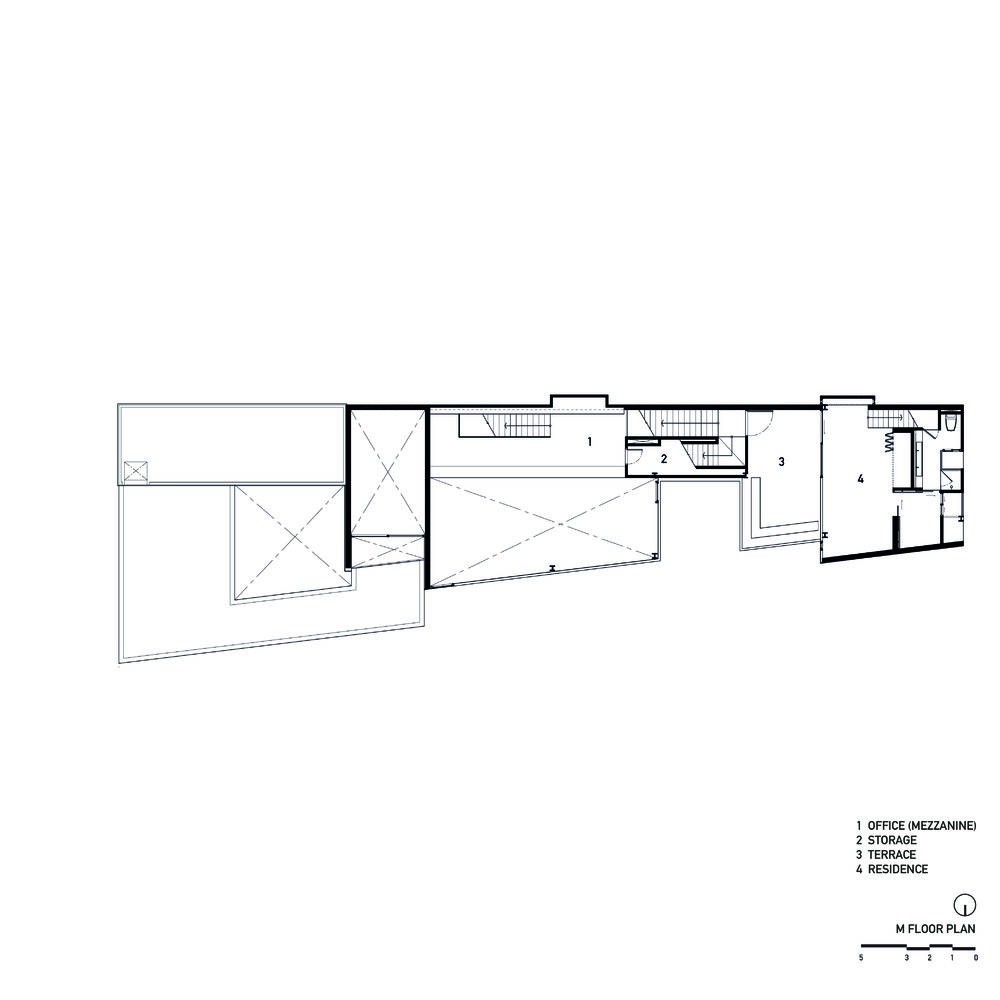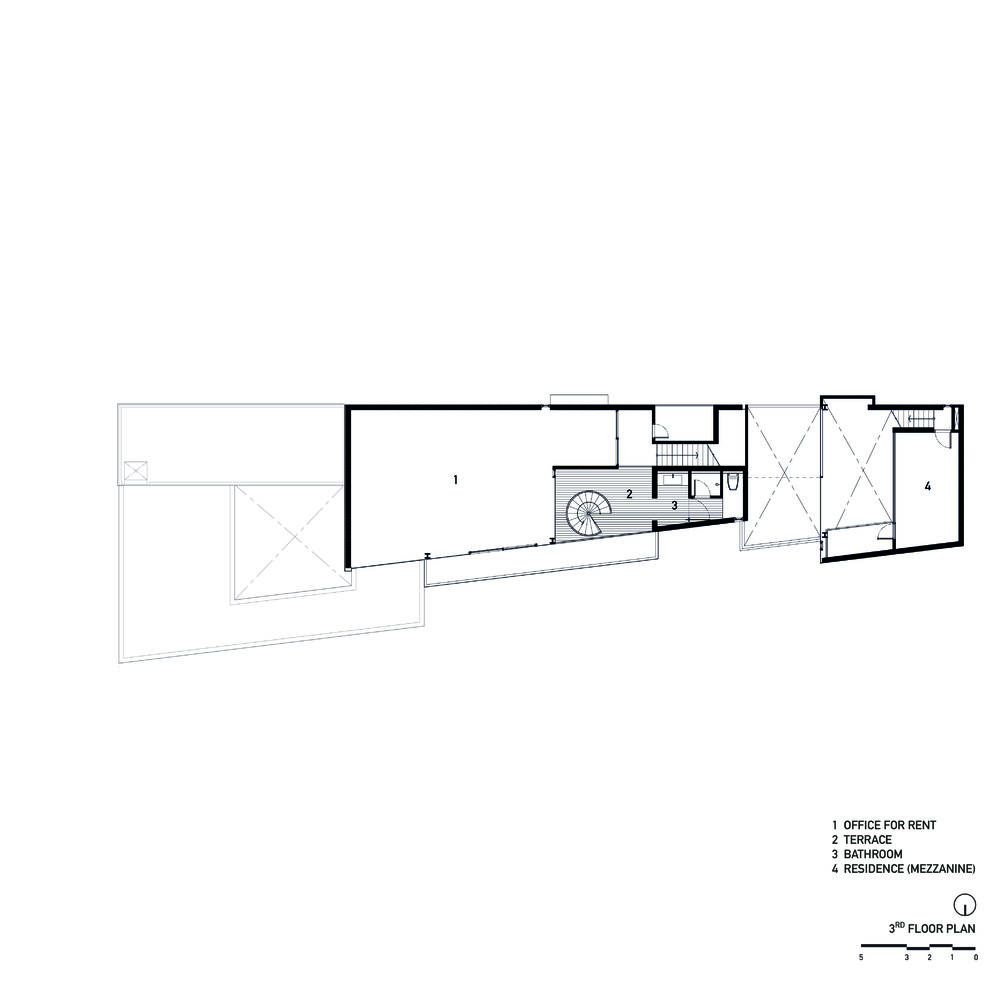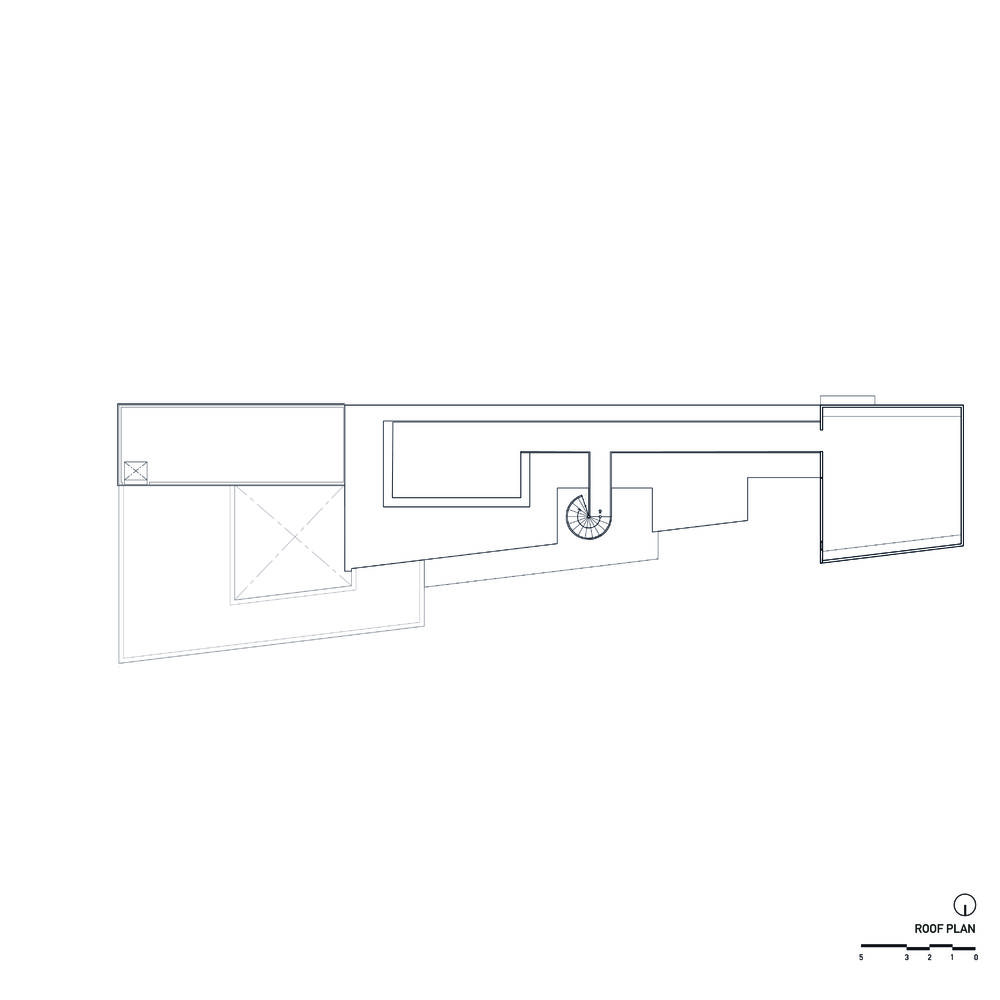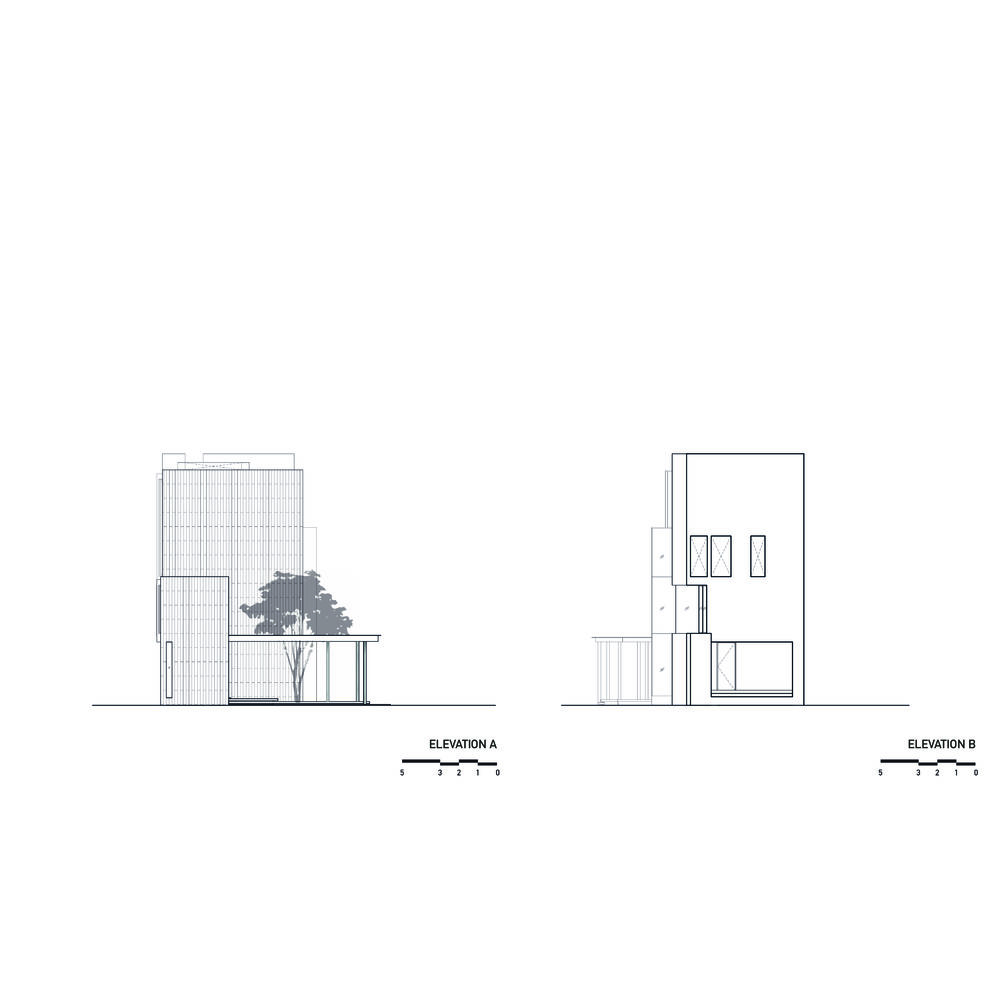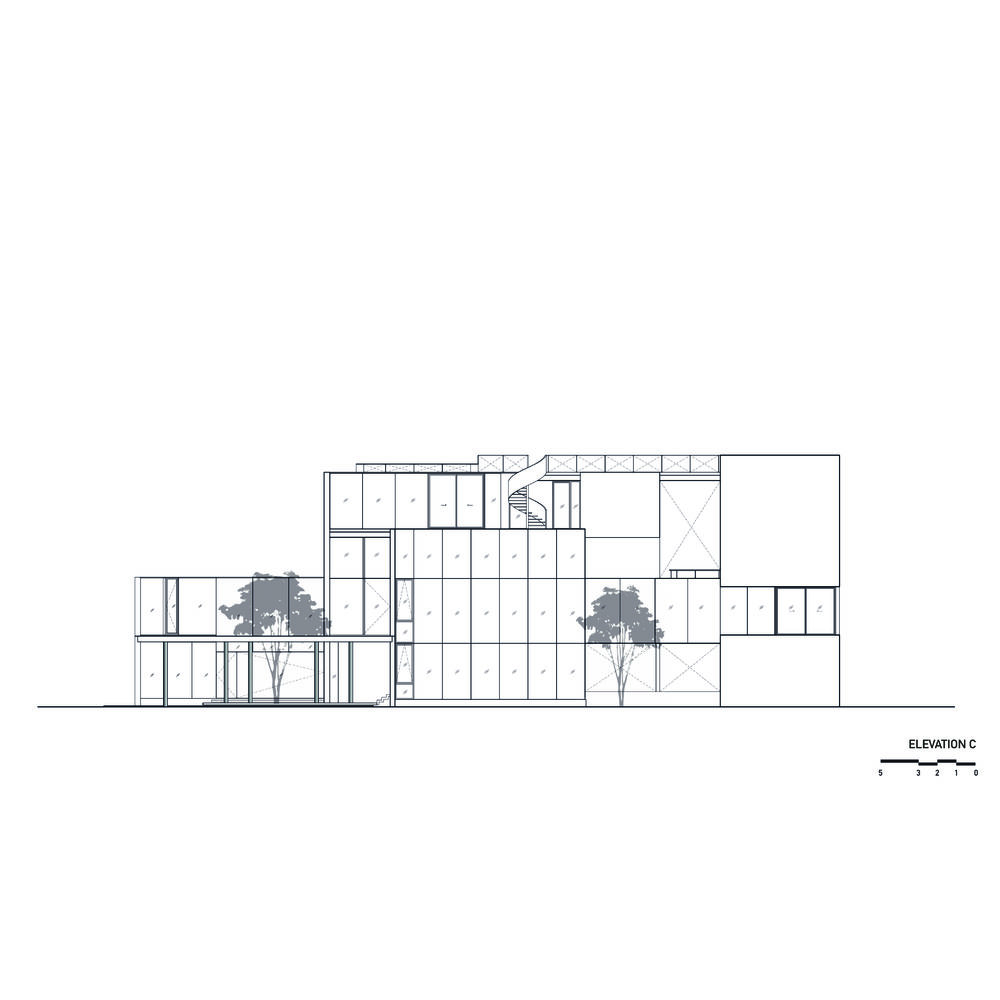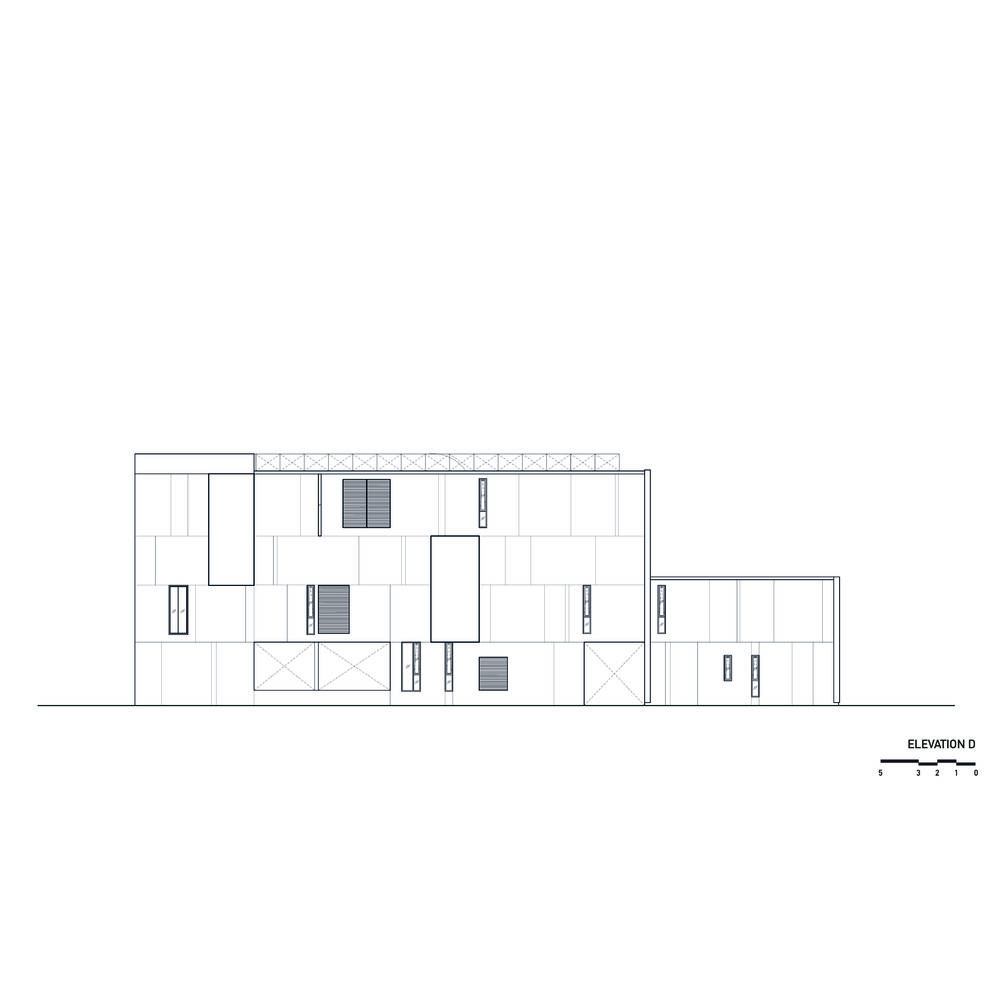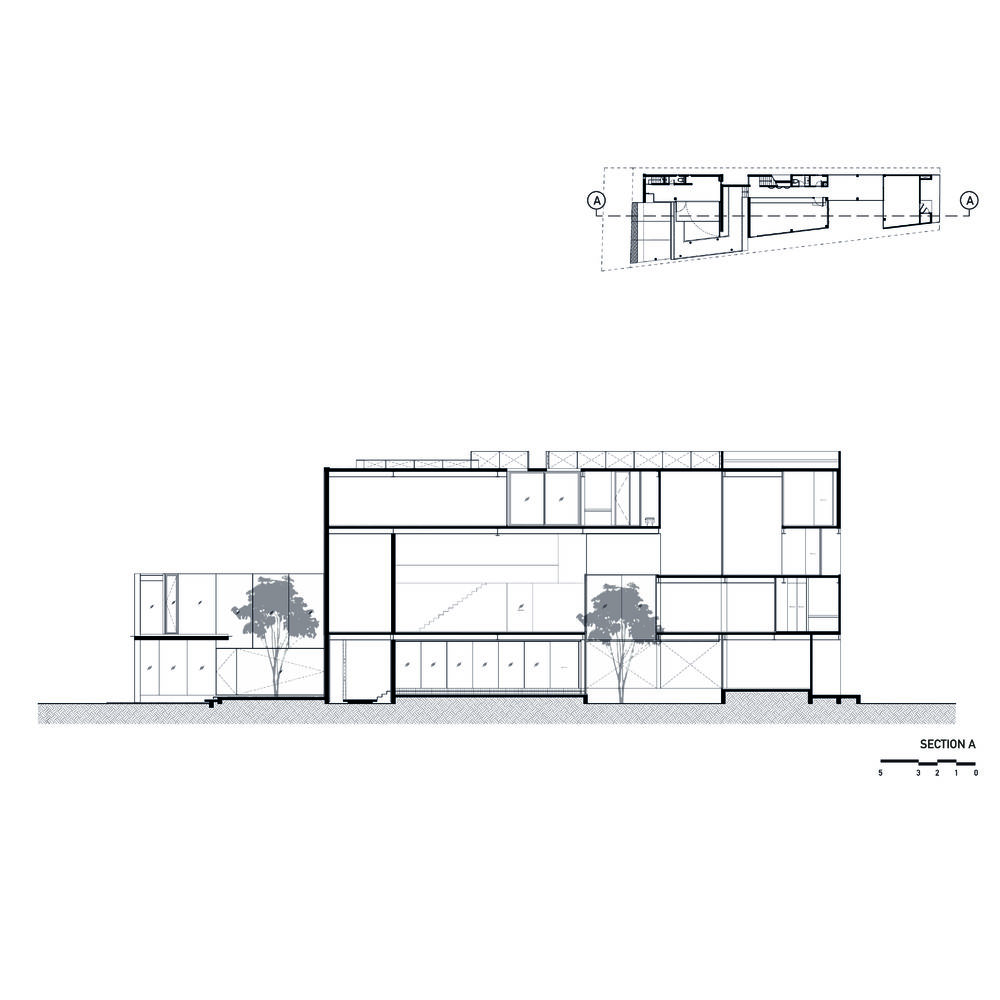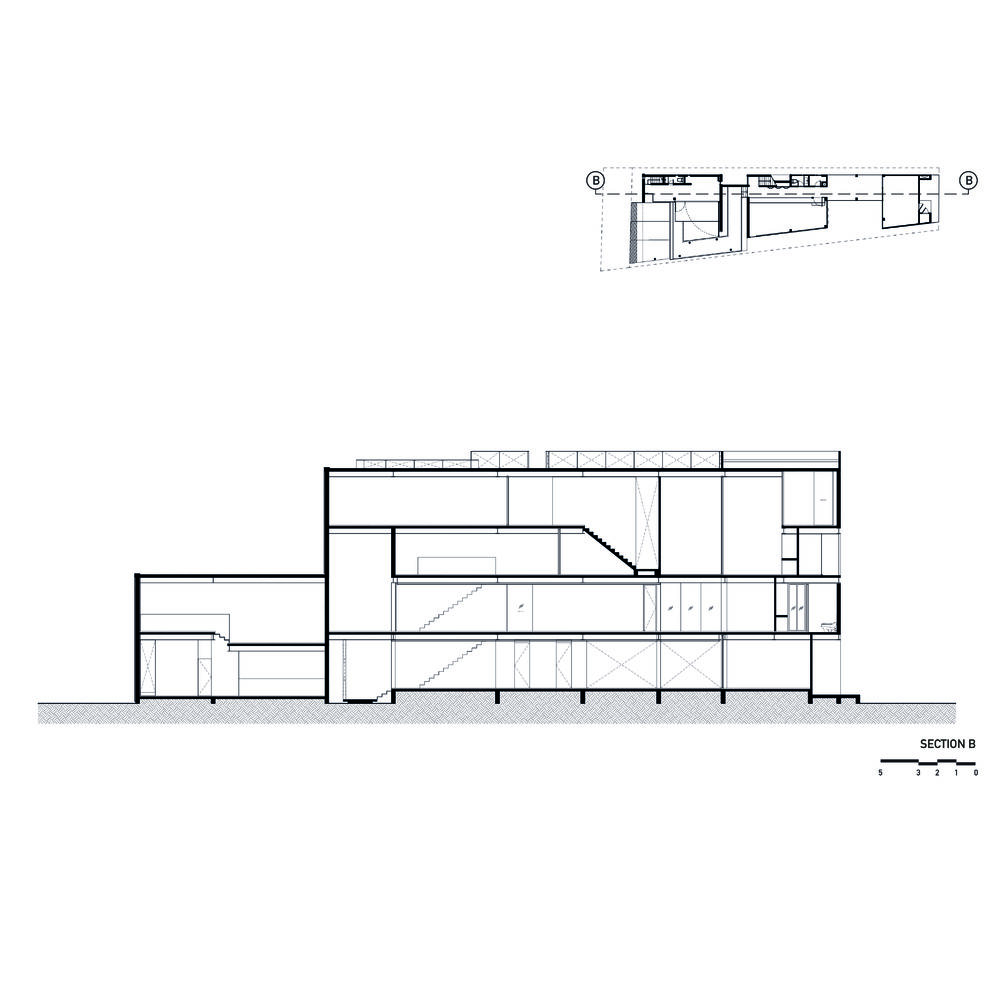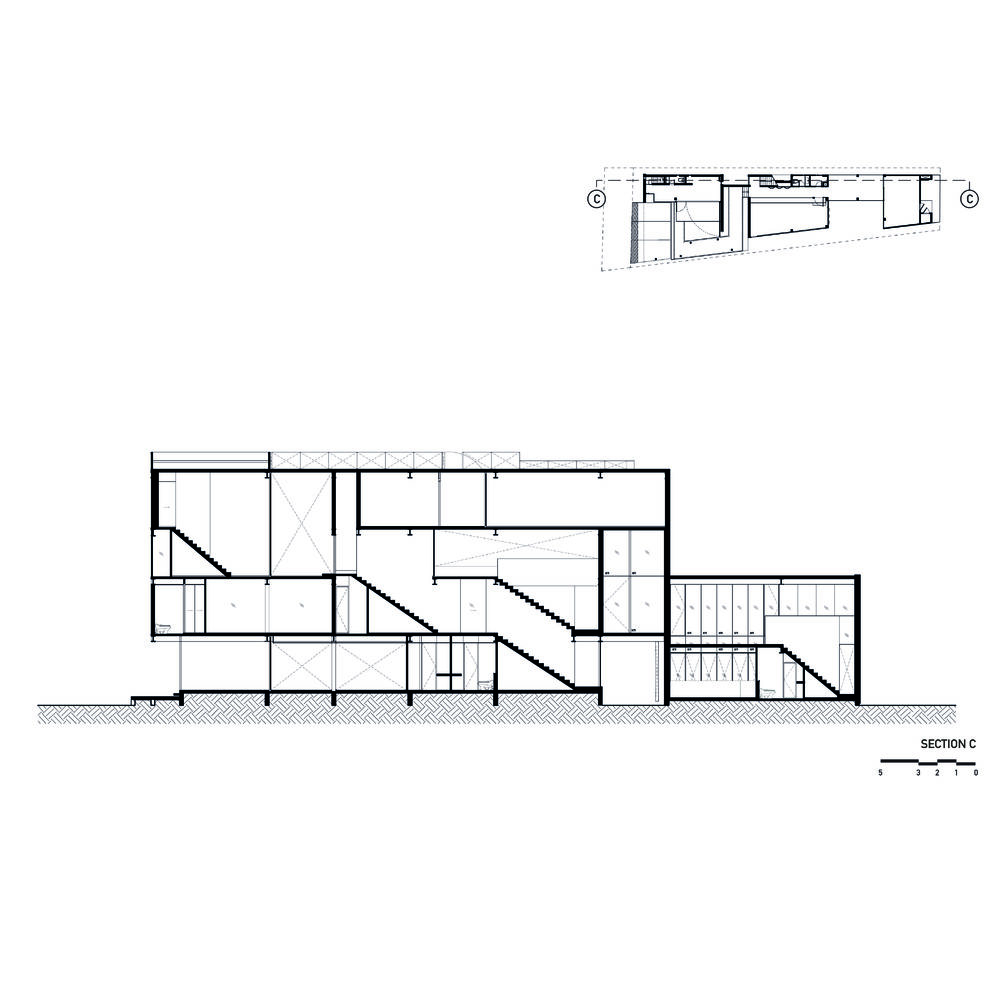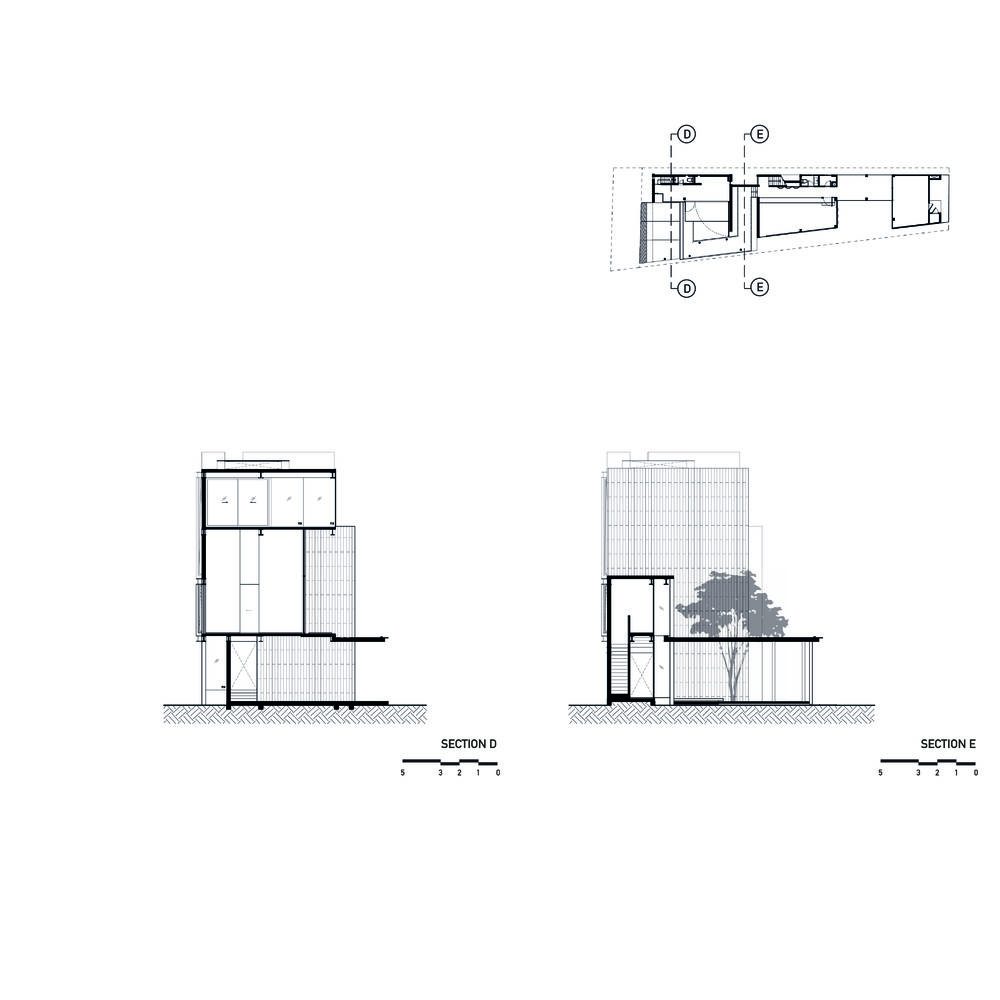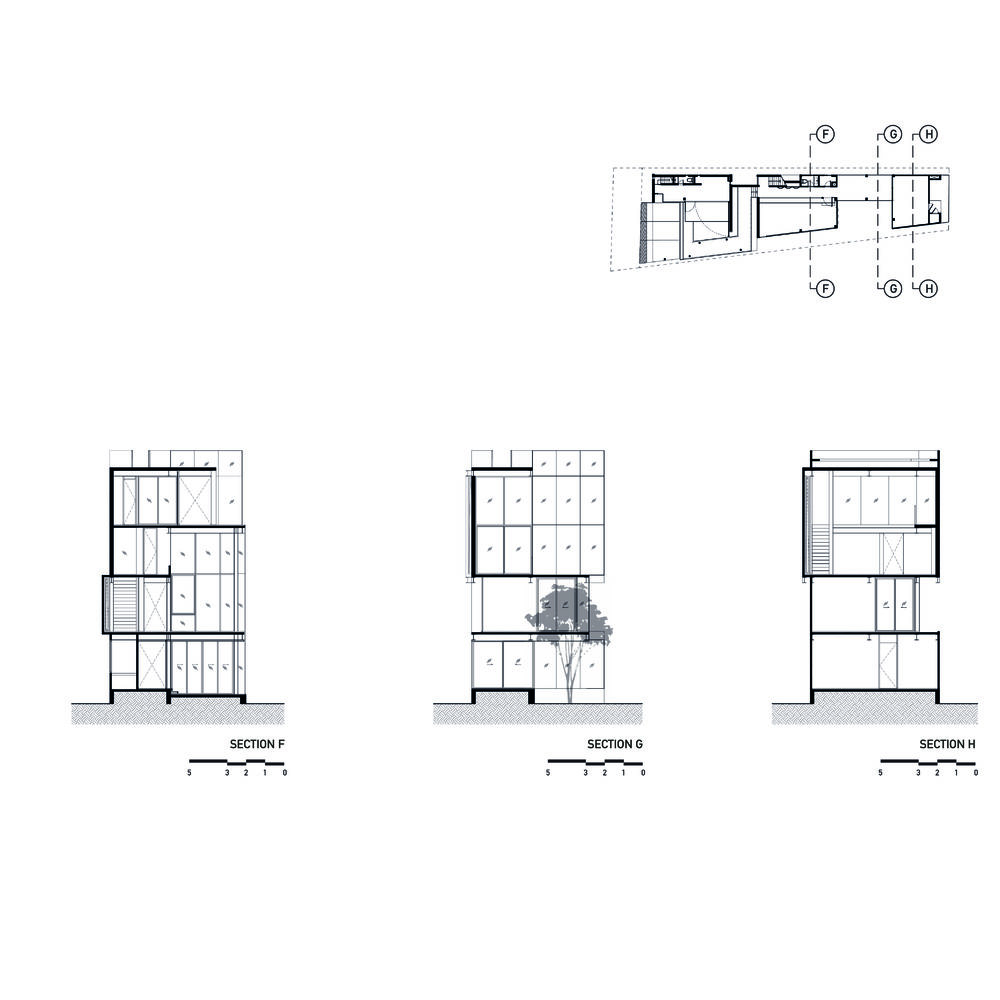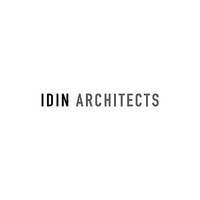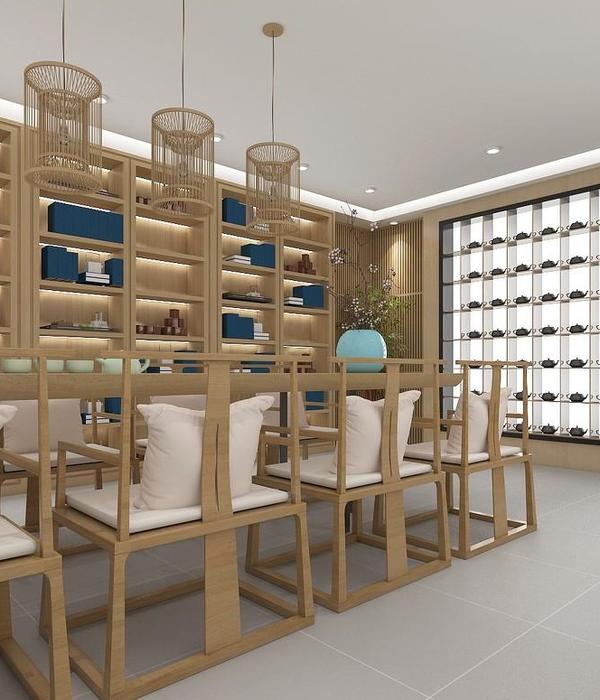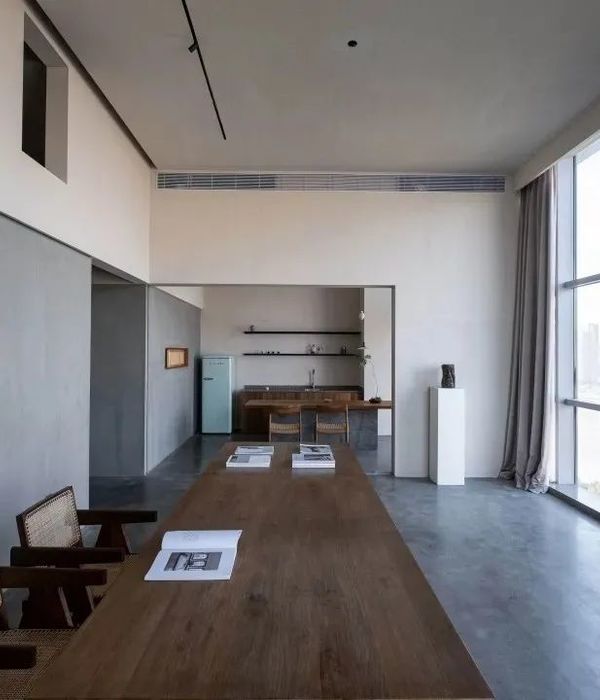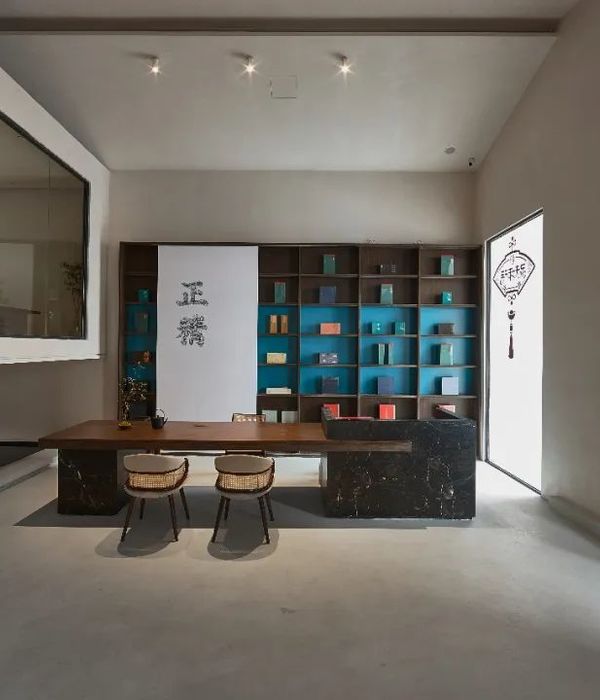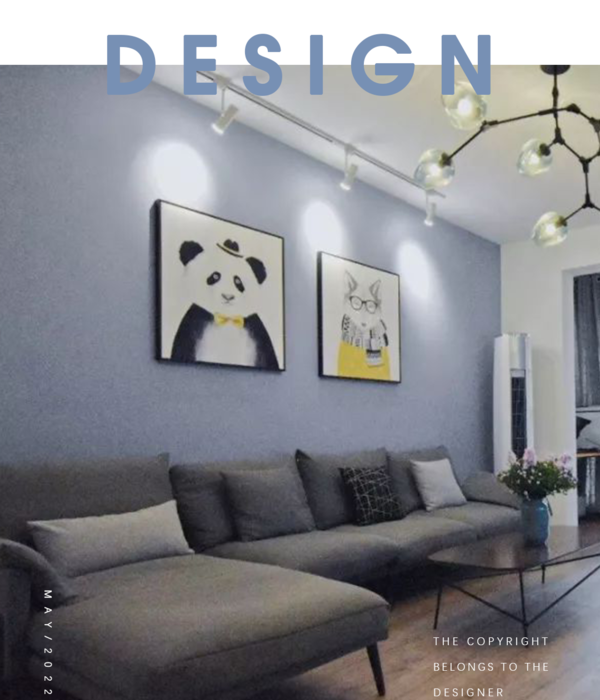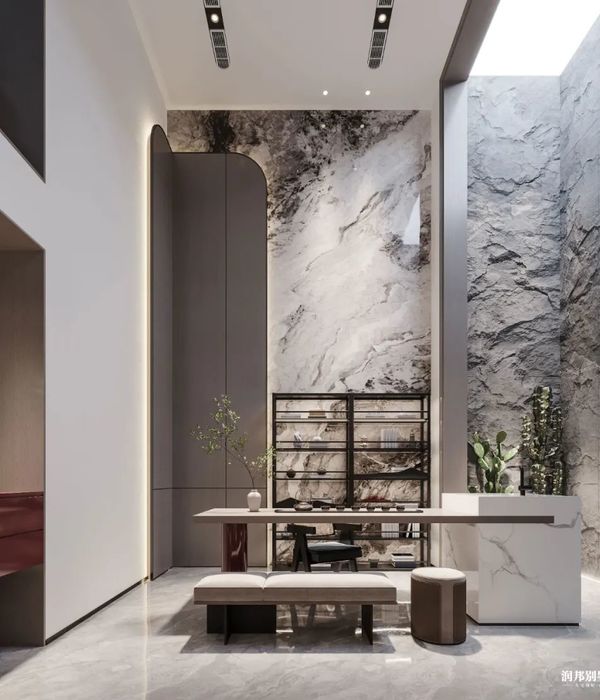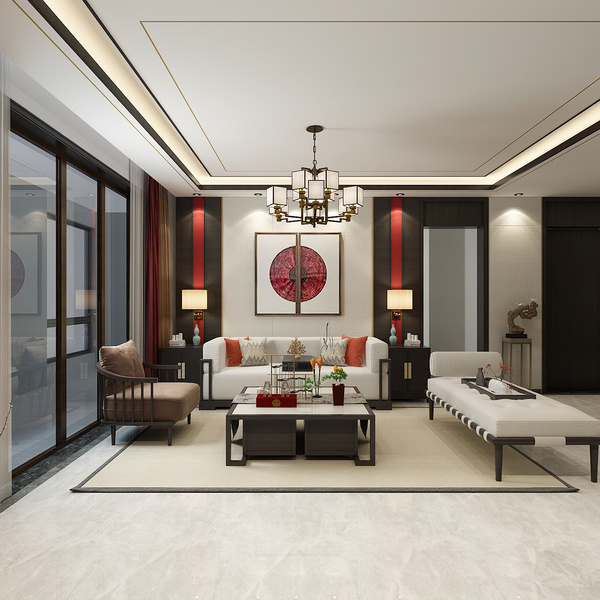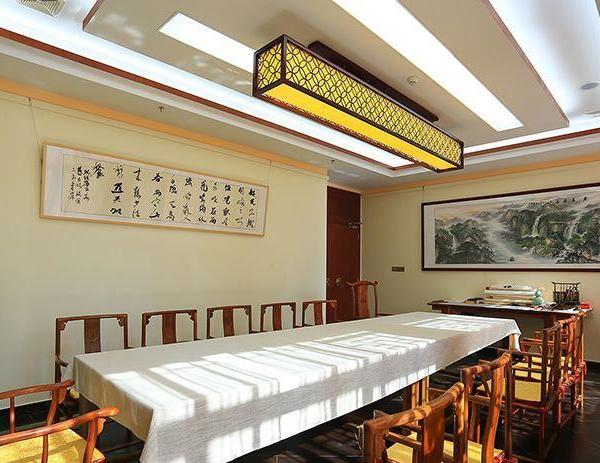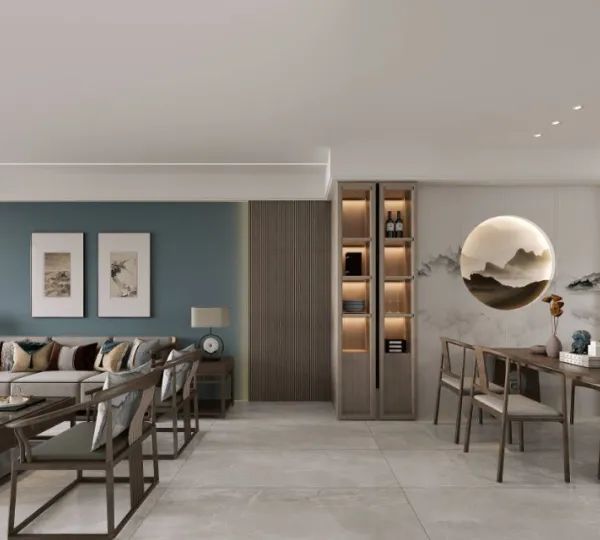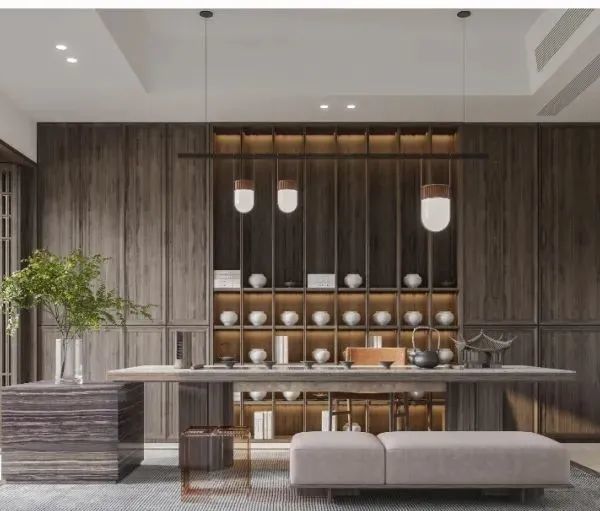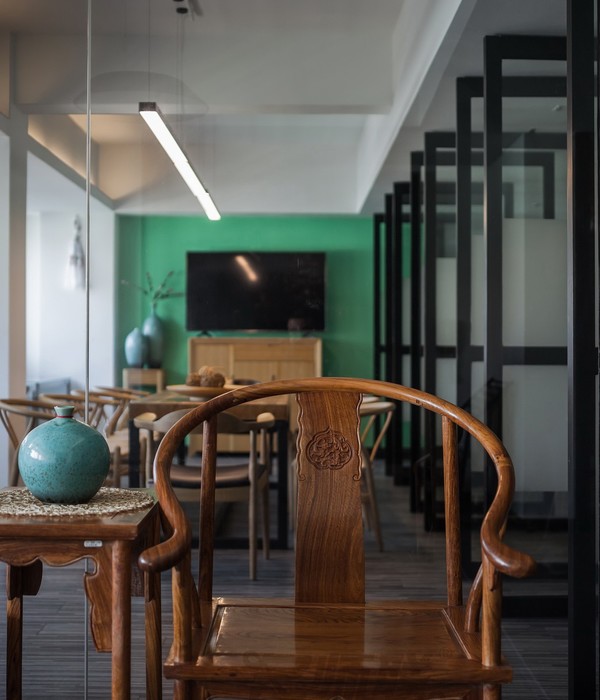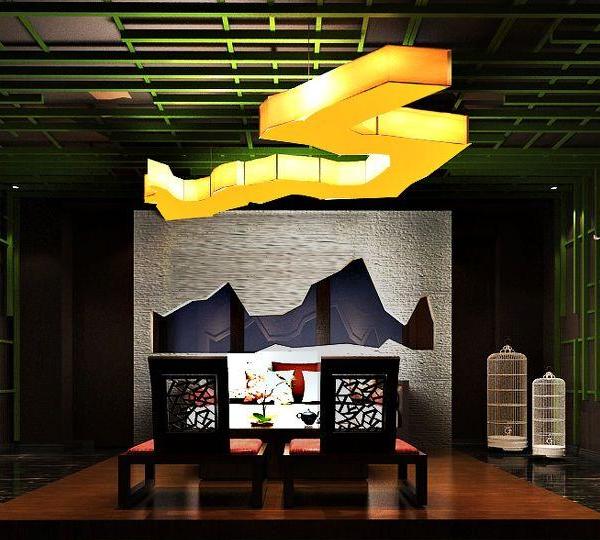曼谷 IDIN Architects 办公室——绿色创意空间
Firm: IDIN Architects
Type: Commercial › Office
STATUS: Built
YEAR: 2018
IDIN Architects initially conceived of its office as a reflection of its core beliefs – the symbiotic relationship of man, building, and environment. The building accommodates a pleasurable working space for the architects while nurturing a better quality of life by creating the natural surroundings around the working area. The idea turns out into integration the greenery of the site with the nearby existing trees. The increased green space in midtown also becomes the shelters for birds and squirrels. The key idea unfolds from creating a creative working place with high privacy and then develops towards an idea about the invisible presence of the building in an urban context.
Unlike the other stand-alone office designs, IDIN Architects decided to walk away from creating an iconic appearance for its office. Besides, passive design is a significant approach for zoning and settling openings of the building by the sun orientation to minimize the building's energy consumption.
IDIN Architects office represents the designer's requirement to have private and creative working space on a small site in one of the most chaotic areas of Bangkok. Most of the passersby misunderstand that the café in the front is the whole workplace of IDIN Architects, without realizing the real building dimension. The playful sequence and order gradually come to greet the visitors while filtering the arrival guests' flow to ensure the privacy and serenity of the creative workplace. Like reading a book, the upcoming chapters disclose slowly, as the readers keep reading the next pages. Each section of the space features different character but still get along under the common principal idea.
The design process starts with packing all functions tightly and surrounding them with tall trees. The greenery rows work as a fence for absorbing noise from busy surroundings while rendering a relaxing view. The building is aligned along the land's length, due to the narrow form of the land. The long compact building mass is stretched out so that in-between space can grow inside and embraces pleasant terraces and peaceful courtyards.
The selection of the material for the main feature wall, burnt cedar woods, plays a significant role in the design process. The articulation of the wall brings about a continuous flow from a solid exterior wall to interior space while creating a camouflage effect on the building. Its unique black color and texture do not come from painting or coloring, but from the burning process to protect plank from fire and termite. Undoubtedly, it implies the IDIN architects' belief that architecture is a solution to the problem-solving process. The result should be unique, aesthetic, and beneficial to people for their better living.
The visitors can experience the rhythm of hide-and-seek throughout the building. The cafe becomes the only exposed function that can be seen from the street. It welcomes any coffee lovers while serving as a reception for the company clients. The building spaces are based on the organization of three zones: public, semi-public, and private. The hierarchical relationships develop in both vertical and horizontal directions. The first zone is located on the ground floor and composed of a café and a meeting room for company clients. It also functions as a recreation area for company staff during the day. Secondly, the semi-public zone contains all working spaces on the second floor and covers most of the building area. The innermost part of the building accommodates a private residential area for the company's principal.
The architects' working space facing the north is enclosed with the Low-E glass wall to blend the greenery view and the quality north light with the interior space. This zone for creative work is the heart of the building. It is settled to be a space with a relaxed atmosphere, good quality of vibrant light, and a comfortable temperature. Most of the west side of the building becomes a solid wall to block the harsh heat. Staircase for the main circulation is aligned along the south to prevent the building from the intense degree of heat transfer caused by the sunlight. The voids at the stairs are specifically designed to use the natural light to accompany all users inside the building. For example, a stair landing, the corner of the corridor, or the entrance hall of the working area. In the natural light, the play of shade and shadow under the trees enlivens the working environment of the office.
